1) Causal model for nonfinancial performance meausre
In the past decade, increasing numbers of companies have been measuring nonfinacial indicators that are usually believed that those reflect realms of intangible value and ultimately affect protiability, such as customer satisfaction, customer loyalty, and employee turnover, etc. But most companies have made little attempt to identify areas of nonfinancial performance that might advance their chosen strategy. Nor have they demonstrated a cause-and-effect link between improvements in those nonfinancial areas and financial profitablitiy. Even worse, nonfinancial measures would be eaqually manipulated as financial accounting, intentioanl or not.
While companies that adopted nonfinancial measurers and then establishes a causal link between those measures and financial outcomes produced significantly higher returns, the misuse of nonfinancail measures may be even more damaing because of the significant opportunity costs incurred. There are 4 common mistakes companies make when trying to measure nonfinancial performance.
2) Common mistakes when measuring nonfinancial performance
Mistake One : Not linking measures to strategy
A major challenge that companies would face when they started to measure nonfinancial performance is that which nonfinancial indicators they would choose. Some companies make mistakes of choosing either the Balanced Scorecard or off-the-shelf checklist that is universally applicable and completely comprehensive. But more successful companies choose their performance measures on the basis of causal models, also called value driver maps, which lay out the plausible casue-and-effect relationships that my exist between the choen drivers of strategic success and outcomes. Causal model shows what areas are expected to improve as the result of commitments to particular courses of action, and then show how those improvements should affect long-term economic performance.
Mistake Tow : Not validating the links
Once creating causal models, we should prove that actual improvements in nonfinancial performance measures affect future financial results. But in many cases, companies simply rely on their perceptions about what is important to customers, employees, suppliers, investors or other stakeholders rather verifying whether those assumptions have any basis in fact. Companies should investigate whether there is a plausible causal relationship between actions and outcomes. Even when the links are self-evedent that common nonfinancial measures lead to higher profits and sharedholer value, such assumtpions are often half-backed or wrong. Businesses that don’t scrupulously uncover the fundamental drivers of their units’ performance often end up measuring too many things, trying to fill every perceived gap in the measurement system. The result is a plenty of peripheral, trival, or irrelevant measures. They can’t tell which measures provide information about progress toward the organization’s untimate objectives and which are noise. If companies can’t provide basic causality, they certainly can’t determine the relative importance of the measures they select. And not being able to weigh these measures makes it hard to allocate resources according to their most beneficial uses or to create meaningful incentives plans.
Mistake Three : Not setting the right performance target
Outstanding nonfinancial performance is not always beneficial. Indeed, it often produces diminishing or even negative economic returns. And most companies have no idea when they achieved too much of good thing. Only by determining the level at which degree ceases to contribute to revenue growth, business can know whether and how much to invest, at any given point, in trying to raise it. If a company can reasonably estimate when the nonfinancial performance improvements will pay off, and by how much, it can set lower interim financial goals, which can subsequently be adjusted upwards. So we should not focus on initiatives that promise short-term financial results but focus on other initiatives that may have higher long-term payoffs.




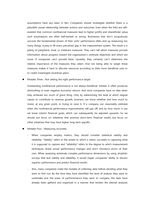
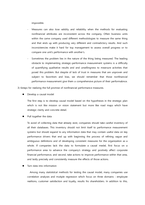

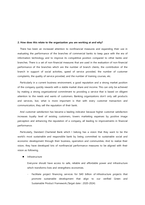
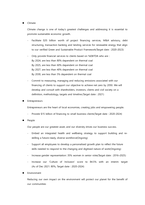
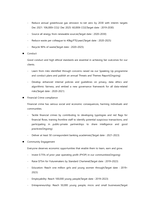

 분야
분야


